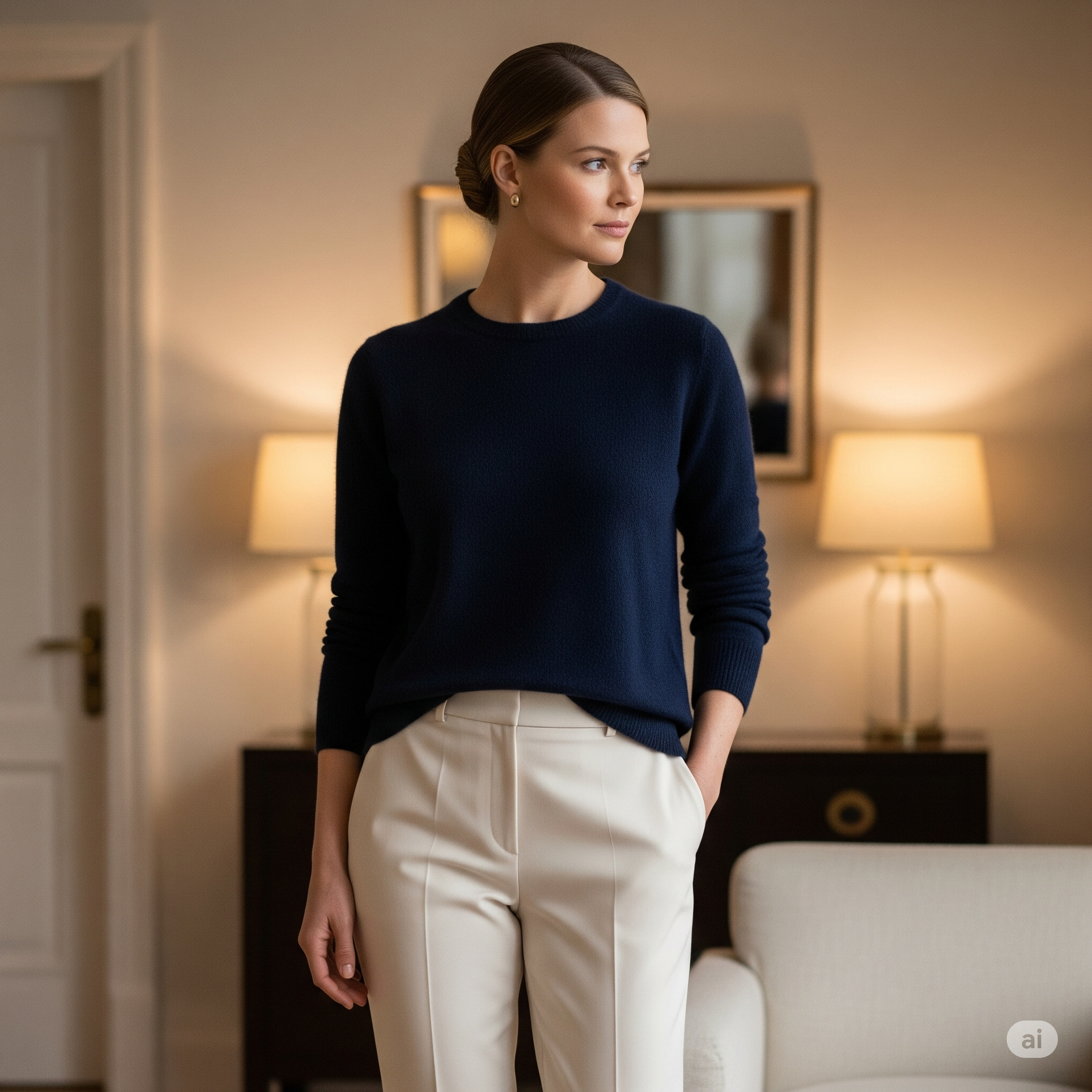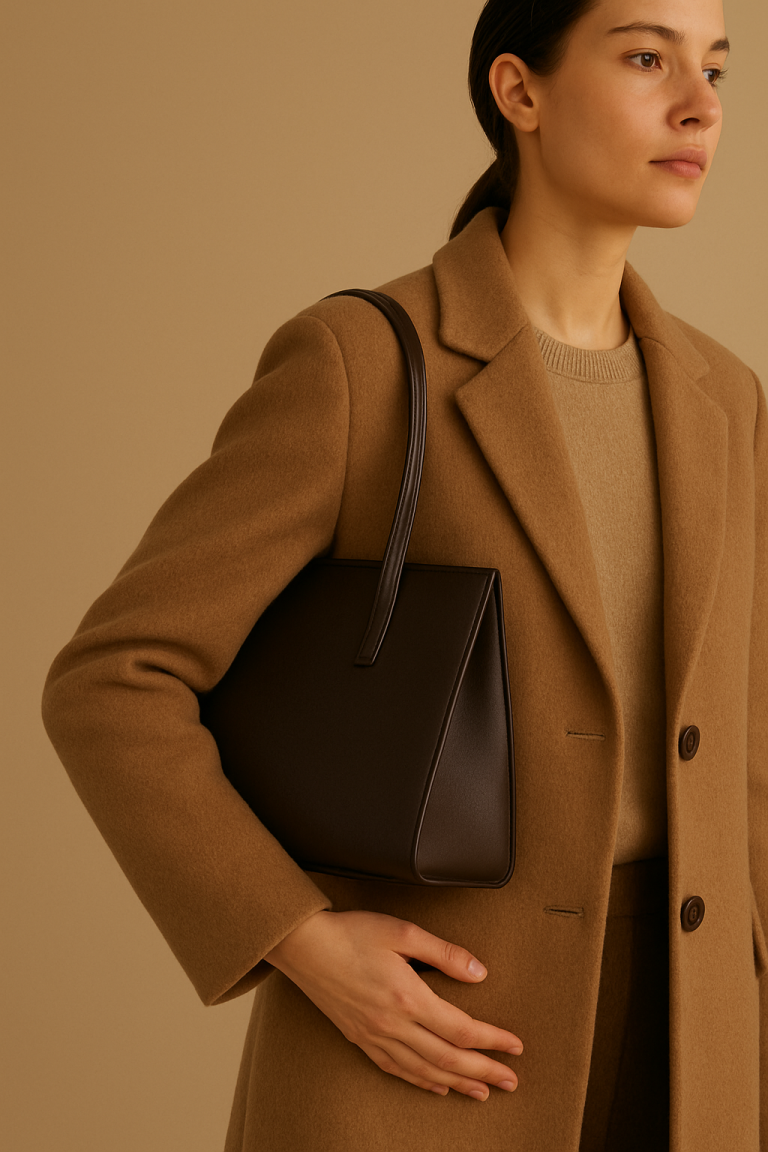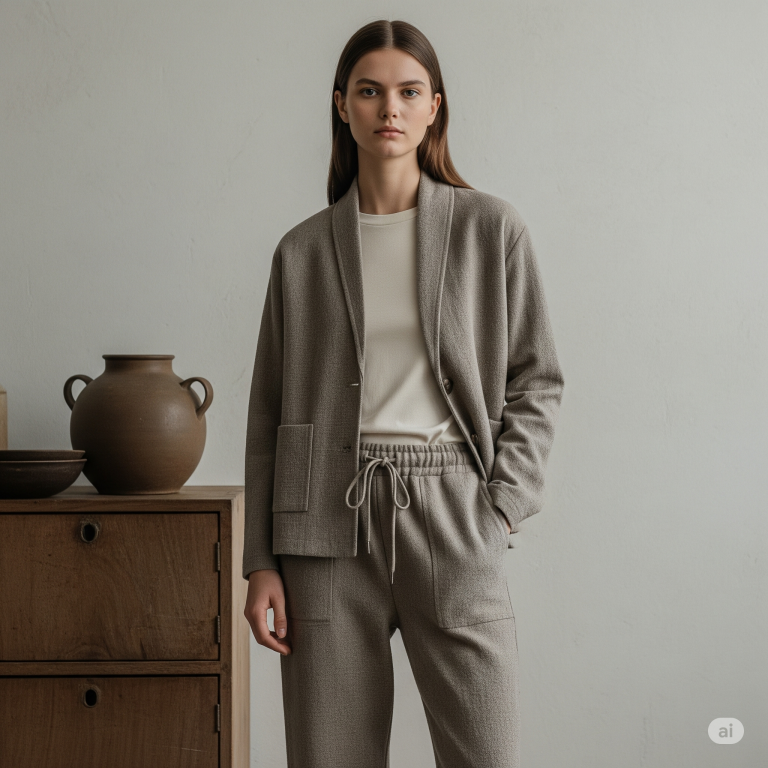
— A Deep Dive into Quiet Luxury and the New Fashion Power Move
The End of the Logo Era
It’s 2025, and the age of blinding logos and Instagram-flex outfits is over—at least among the truly wealthy. In its place? A wave of understated elegance, quiet tones, and pieces that whisper status instead of screaming for attention. The logo-saturated streetwear that once dominated luxury fashion is now passé in elite circles. Instead, less has become so much more.
Fashion insiders call it “stealth wealth,” but it’s more than just a trend. It’s a cultural pivot—a reflection of values, not vanity. People with generational wealth have long preferred clothes that don’t need to brag, and now, the rest of the fashion world is finally catching up.
The most coveted items? A camel hair coat from Loro Piana, a perfectly cut navy Totême blazer, or even a bespoke knit in the softest cashmere from The Row. You won’t find loud prints or gilded embellishments. Instead, you’ll see rich materials, refined tailoring, and craftsmanship that quietly costs a fortune.
This isn’t just a change in fashion—it’s a change in culture. One that says:
“If you know, you know. And if you don’t… you were never supposed to.”
Old Money Aesthetics: The New Gold Standard
There’s a reason “old money aesthetic” is trending on TikTok—ironically, by people trying to imitate a look that’s designed to not be noticed.
The idea behind this style isn’t new. It’s rooted in generational confidence, a wardrobe built on family traditions, hand-me-downs, and bespoke tailoring. These are clothes that weren’t bought to show status, but inherited, commissioned, or curated over time. Brands are not the point—the absence of them is.
In 2025, the aspirational look is no longer about “new money” excess. It’s about restraint, taste, and timelessness. A cotton poplin shirt that fits just right, a cashmere pullover with no frills, or tailored trousers in oat or navy.
This aesthetic tells a story:
“I didn’t need to buy this for attention. I wore this because it fits my lifestyle—and has for generations.”
From Hype to Heritage: Why Craftsmanship Matters More Than Clout
Once upon a time, clout was king. “Hype drops,” “exclusive collabs,” and limited-edition chaos defined modern fashion. But the pendulum is swinging back—fast.
Today’s luxury consumers, especially the ultra-wealthy, are rejecting speed and spectacle in favor of heritage, skill, and story.
Hand-stitched leather, single-origin wool, vegetable-dyed cotton—these aren’t trends. They’re testaments to time. Buyers are seeking out brands like Brunello Cucinelli, Massimo Alba, Sunspel, and Studio Nicholson, not for name recognition, but for quiet, persistent quality.
And the difference is tangible. While fast fashion screams for a moment, craftsmanship lasts a lifetime. The truly wealthy are investing in fashion the way others invest in art: with an eye for detail, origin, and value over time.
The Psychology of Understated Power
Let’s talk status. True status isn’t loud—it’s psychological.
Wearing less but spending more is a flex only available to the confident. In fact, the psychology behind quiet luxury is deeply rooted in power dynamics. The less you try to prove, the more powerful you appear. This is non-verbal dominance, a quiet signal that says:
“I don’t need your validation. I already belong.”
This idea mirrors behavioral economics: when scarcity is natural, not manufactured, value increases. That’s why a white tee from James Perse or a brushed-cashmere sweater from Khaite carries more cachet than an overbranded designer outfit.
Subtle power is the new peacocking. The rich aren’t dressing down to hide—they’re dressing down to distinguish.
Sustainability as the New Statement Piece
Quiet luxury isn’t just chic—it’s conscious.
At its core, this movement is aligned with the values of slow fashion and sustainability. Ethical production, transparent sourcing, and timeless design aren’t just marketing terms anymore—they’re the default settings of modern luxury.
In 2025, sustainable fashion has evolved beyond basics. It’s become refined, luxurious, and quietly radical. Brands like Gabriela Hearst, Eileen Fisher Renew, and Asket are leading the charge—creating pieces that are not only beautiful but circular, repairable, and future-minded.
For the truly wealthy, waste is out of fashion. They don’t need 20 outfits—they invest in five perfect ones. Not only is this better for the planet, but it’s also a new measure of sophistication.
Owning less but owning better?
That’s the richest flex of all.
Luxury That Doesn’t Shout—But Still Speaks Volumes
Let’s spotlight the icons of quiet luxury. These are the brands and designers redefining status without slogans:
- The Row: Created by Mary-Kate and Ashley Olsen, this cult label is known for its architectural silhouettes, muted tones, and impeccable tailoring.
- Loro Piana: A pinnacle of fabric quality, known for vicuña and cashmere garments with prices that silently signal class.
- Totême: Swedish minimalism meets fashion-forward elegance.
- Zegna: Once traditional menswear, now a playground for understated luxury.
Even louder legacy brands are adapting. Gucci’s minimalist tailoring, Balenciaga’s tonal collections, and Prada’s back-to-basics reboot all indicate a sea change. The new luxury uniform is invisible to outsiders—but instantly recognizable to insiders.
This is the fashion of coded wealth.
Can You Spot It? The Silent Signals of Real Wealth
In the world of quiet luxury, there are no giveaways—but there are clues.
Here’s what insiders look for:
- Texture over trend: Garments in cashmere, linen blends, or brushed cotton that feel expensive even if they look plain.
- Fit as the ultimate flex: Tailoring so precise, it could only be custom or high-end.
- Neutral palettes: Earth tones, navies, creams, and greys dominate. Color becomes whisper, not shout.
- Accessories without obvious origin: A watch passed down from a grandfather. A hand-stitched wallet. A vintage gold ring. No brand names needed.
It’s almost ironic: the truly expensive things look… not expensive.
And yet, to those who know, they’re unmistakable.
Conclusion: The Power of Not Trying (Too Hard)
In an era where attention is currency and trends move at warp speed, quiet luxury is a form of rebellion. It’s a rejection of flash, of hype, of chaos. It’s about choosing pieces that feel good, last long, and tell a story no billboard can.
To dress quietly is to live intentionally. It’s about self-assurance, not self-promotion. It’s about the luxury of not needing to be seen to be significant.
So next time someone walks into the room in head-to-toe basics, pause. They might be wealthier than anyone else there.
And they’re definitely dressing like they don’t need to prove it.



